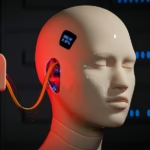Unpacking Drone Technology: What’s Next in UAV Innovations?
Introduction
The rapid evolution of drone technology has transformed various sectors, including agriculture, logistics, surveillance, and entertainment. Unmanned Aerial Vehicles (UAVs), commonly known as drones, have emerged as powerful tools that offer new possibilities, enhance operational efficiency, and improve data collection processes. This article delves into the current innovations in drone technology while providing insights into the future landscape of UAVs.
Chapter 1: The Evolution of Drone Technology
1.1 Early Beginnings
Drones initially began as military tools, with early models dating back to World War I, utilized for reconnaissance missions. Over time, the technology advanced significantly, transitioning into commercial applications. By the early 2000s, drones started gaining traction in the civilian market, primarily for aerial photography and mapping purposes.
1.2 The Rise of Consumer Drones
As technology became more accessible, consumer drones gained popularity. Companies like DJI produced user-friendly models equipped with high-quality cameras, making aerial photography accessible to hobbyists and professionals alike. This shift not only democratized drone usage but also paved the way for diverse applications beyond entertainment.
Chapter 2: Current Innovations in Drone Technology
2.1 Advanced Sensors and Cameras
Modern drones are equipped with advanced sensors and high-resolution cameras that enable them to capture stunning imagery and collect valuable data. Multi-spectral cameras and LiDAR sensors provide real-time data analytics, supporting industries such as agriculture and mining. These innovations empower users to make informed decisions through precise data, enhancing productivity and operational efficiency.
2.2 Autonomy and Artificial Intelligence (AI)
One of the most significant advancements in drone technology is the integration of AI. Autonomous drones are capable of performing complex tasks with minimal human intervention. They can navigate complicated environments, avoid obstacles, and adapt to changing conditions. Companies are increasingly employing machine learning algorithms to enhance drone capabilities, leading to advanced functionalities like automated inspections and deliveries.
2.3 Swarm Technology
Swarm technology involves the use of multiple drones operating collaboratively. This innovation allows for efficient data collection and coverage of large areas in a shorter time frame. Industries are beginning to leverage swarm technology for applications such as agricultural monitoring, search and rescue operations, and environmental assessments.
Chapter 3: Regulatory and Ethical Considerations
3.1 Navigating Drone Regulations
As drone technology advances, regulatory frameworks are evolving to ensure safety and compliance. The Federal Aviation Administration (FAA) and other regulatory bodies around the world are developing guidelines to standardize drone operations. Key considerations involve airspace management, pilot certification, and commercial use regulations.
3.2 Ethical Concerns
The increasing reliance on drones raises ethical questions regarding privacy and surveillance. The deployment of drones for monitoring can infringe on individual privacy rights. Additionally, the potential for misuse in military operations prompts discussions about establishing ethical standards for drone applications.
Chapter 4: The Future of UAV Innovations
4.1 Urban Air Mobility (UAM)
Urban air mobility, a concept focused on air transportation within urban areas, promises to revolutionize urban commuting. Electric Vertical Takeoff and Landing (eVTOL) aircraft are being developed for passenger transport and cargo delivery, potentially reducing traffic congestion and enhancing mobility in metropolitan regions.
4.2 Package Delivery Drones
E-commerce giants are investing heavily in drone delivery services. Companies like Amazon and Walmart are experimenting with drones to facilitate faster delivery solutions, meeting increasing customer demands for quick shipping. Innovations in battery life and payload capacity will be crucial for the widespread adoption of package delivery drones.
4.3 Infrastructure Monitoring and Maintenance
Drones are poised to play a pivotal role in infrastructure monitoring and maintenance. With their ability to access hard-to-reach areas, drones can conduct inspections of bridges, power lines, and pipelines more efficiently than traditional methods. Real-time data collection will aid in predictive maintenance, mitigating risks associated with infrastructure failures.
Chapter 5: Broader Applications of Drone Technology
5.1 Agricultural Advancements
Precision agriculture is one of the most impactful applications of drone technology. Drones equipped with specialized sensors can monitor crop health, assess irrigation needs, and identify pest infestations. This data empowers farmers to optimize resource utilization, resulting in increased yields and sustainability.
5.2 Disaster Response and Management
Drones have proven invaluable in disaster response scenarios. Equipped with thermal imaging and real-time video, they can assess damage, locate victims, and deliver essential supplies. Their ability to rapidly gather information allows emergency responders to strategize more effectively, ultimately saving lives.
5.3 Environmental Conservation
Drones are increasingly utilized in environmental conservation efforts. They facilitate wildlife monitoring, deforestation tracking, and anti-poaching activities. With data collected from drones, conservationists can make informed decisions to protect ecosystems and biodiversity.
Chapter 6: The Challenges Ahead
6.1 Technological Limitations
Despite rapid advancements, drone technology faces limitations, particularly concerning battery life and payload capacity. Overcoming these challenges will be essential for the widespread adoption of commercial drones in various applications.
6.2 Public Perception and Trust
Public perception of drones remains a challenging obstacle. Concerns about safety, privacy, and their potential for misuse must be addressed to build trust among communities. Engaging stakeholders and promoting transparency in drone operations will be vital in fostering a positive public image.
Conclusion
Drone technology is at a pivotal point, evolving rapidly with unprecedented potential for innovation across numerous sectors. From enhancing agricultural practices to revolutionizing urban mobility, the future of UAVs is bright. While challenges remain, addressing regulatory and ethical considerations will pave the way for broader acceptance and more impactful applications. As we continue to unpack drone technology, one thing is certain: the sky is the limit.
References
- Smith, J. (2022). The Future of Drones in Urban Air Mobility. Journal of Emerging Technologies, 14(3), 23–45.
- Thompson, R. (2021). Drone Regulations: A Global Perspective. Aviation Policy Review, 9(4), 67–82.
- Brown, L. (2020). Aerial Innovations in Agriculture: Enhancements and Future Trends. Agricultural Science Journal, 15(2), 90–100.
- Lee, C. (2023). The Ethics of Drone Surveillance: Balancing Safety and Privacy. Journal of Ethics in Technology, 12(1), 155–173.


























Add Comment